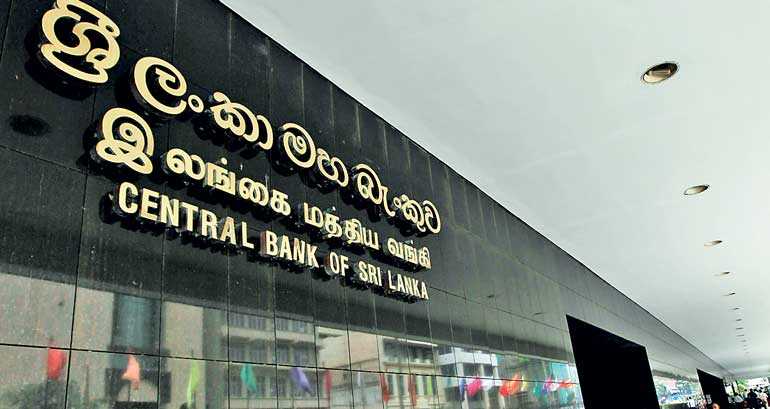Tuesday Jan 13, 2026
Tuesday Jan 13, 2026
Tuesday, 12 January 2021 00:00 - - {{hitsCtrl.values.hits}}

Recent Fitch Ratings’ assessments about the current state of loans and lending have caused alarm in the local banking scenario
 The global economy is in decline, mummifying all activities and virtually halting growth prospects, due to the COVID-19 pandemic spreading at an alarming speed, signalling signs of the worst economic shock the world has experienced in the form of the deepest recession after several decades.
The global economy is in decline, mummifying all activities and virtually halting growth prospects, due to the COVID-19 pandemic spreading at an alarming speed, signalling signs of the worst economic shock the world has experienced in the form of the deepest recession after several decades.
Attention of financial circles throughout the world remains heavily focused on the performance of the banking sector and its asset quality associated with the conundrum. Key words interacting correlated to the ongoing discussion are Fitch Ratings, Non-Performing Loans (NPL), impairment, Loan Loss Provisions (LLPs), equity capital and credit risks, etc.
In a background of major financial catastrophes such as the Great Financial Crisis of 2007 followed by other localised more recent happenings including those in Cyprus and Greece, loan portfolios of banks have become serious concerns of those focusing on early recognition of credit losses and transparent disclosures. Regulatory and accounting treatment of bank assets occupy an important position under these.
Recent Fitch Ratings’ assessments about the current state of loans and lending have caused alarm in the local banking scenario. Particularly in association with unprecedented lowering of ratings there is a compelling need for a closer and careful scrutiny of the overall position.
A recent news flash states that combined impaired loan ratio of BOC and PB is at 9.8% by end of September from 10.4% end 2019 while impaired loan ratio at private banks increased 10.1% from 8.8%. Fitch Ratings went on to qualify its reference by further stating that ‘the pressure on asset quality was more evident in the privately-owned banks, and a rise in impaired loan ratios in both State and private banks could become crystallised from the second or third quarter of next year as the moratorium would hide the true nature of the loans under stress at present.”
However, Fitch Ratings is highly sceptical about the true position of this difference in the shift and how the picture would look applied to all banks once the moratorium granted by the CBSL (initially for six months from April last year and further extended by another six months lasting in March 2021), ends.
One significant factor Fitch Ratings may have overlooked could be the degree of uniformity in the application of the moratorium as allowed by the CBSL in the State and private sectors. With less political pressure, the private sector banks are apparently engaging to regularise borrowings and set aside adequate provisions without dramatically increasing the risk of write-offs as a safety measure against an unpredictable environment in the future. This sounds more sensible and a safe measure helping in the long term to reduce the need to raise equity in the event of a crisis.
Even if the number of NPLs decline, it is more prudent and realistic to apply higher impairment losses to loans in the category of reasonable suspicion of default. There cannot be any controversy about the number of risky loans growing at an increasing rate according to the prevailing conditions.
State banks are blessed with a ready source for capital augmentation as we have seen in the past, the Treasury. So, they do not have to take pains in chasing the borrowers to reduce their obligations and/or bring them into the regular fold by following other possible steps such as rescheduling.
The composition of the loan portfolio (mix-up) is another important factor for the two State banks to keep their combined loan impairment figures low. Approximately about 52% of their total loans are either direct to the State or to the SOEs.
Application of general impairment rules are relaxed extensively and there is a great deal of leeway available to the State banks in respect of advances to the State sector despite their default status. Even the regulatory controls seems to be applied in an offhand manner.
An example of this practice can be elaborated by referring to how the very large defaulted outstanding amounts of SriLankan Airlines is treated by the two leading State banks. In one bank the loan is continued in the current section while the other bank has applied the regulatory criteria and transferred it to NPL category.
A namesake guarantee provided by the Treasury in the form of a Letter of Comfort issued to authorise the lending is regarded by the former to treat it as a fully secured facility while the latter has applied other obvious criteria such as the balance sheet positions and the net-worth of the entity in assessing its asset quality as sub-standard or doubtful despite the cover available under similar letters of comfort. The NPL in one bank remains low whereas LPL balance and the loan impairment losses in the other shows an increase. This makes an accurate comparing unrealistic and impossible. To that extent the ratings by Fitch become debatable.